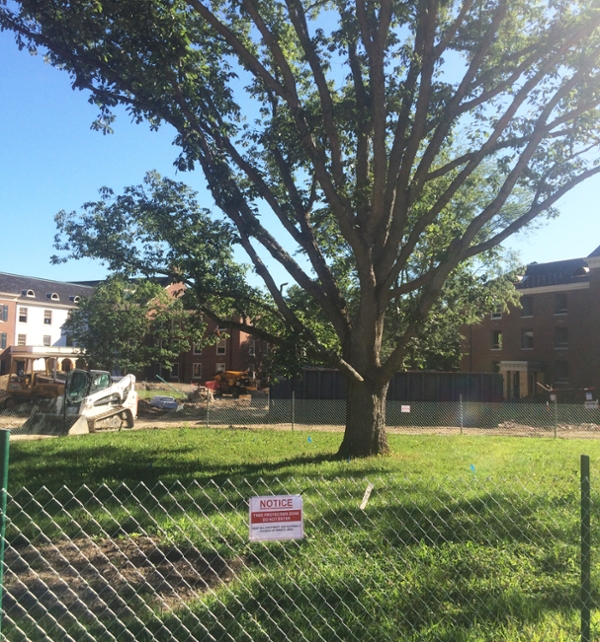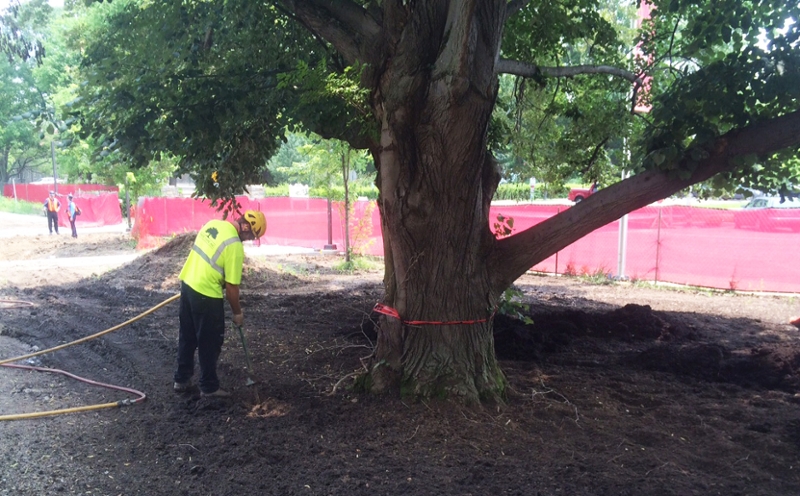

Physical facilities works to protect Miami's trees during construction
Our Campus Beauty
by Vincent Cirrito, landscape architect, physical facilities

Tree protection during the North Quad renovation.
I am sure everyone noticed all of the construction across campus, and maybe even wondered how our trees will survive all of it.
Physical facilities takes tree preservation very seriously with a Tree Inventory Survey required of all major projects. This survey identifies all trees within the designated project site and documents the species and their role in the landscape (specimen, contributing, impaired, declining and stressed, or non-contributing). The project design team uses this inventory as a guide to do the necessary work required.
New utilities and sidewalk locations are thoughtfully designed and implemented reducing the impact to specimen and contributing trees.
Unfortunately we cannot save all trees during these large-scale projects. Some trees are located next to buildings where excavation must occur for basement waterproofing or the necessary locations of utility corridors.
The main cause of death of a tree is compaction and damage to roots due to excavation.
Once we agree which trees to keep and protect, we give a plan drawing to the contractor indicating tree protection measures to implement.
Some tree protection measures taken include:

An air-spade is used for root aeration, shown here at the East Quad renovation.
Installation of chain link fencing around the critical root zone (which is generally to the outside edge of the outer branches).- Placement of plywood to the site if wheeled access is required over tree roots inside the critical root zone.
- Root pruning when utility work occurs within the critical root zone. With the help of a certified arborist, the roots are cleanly cut (usually in early spring) prior to excavating work beginning so that the roots aren’t torn during the actual work. Having this completed in the spring before our summer work begins allows the tree to regenerate new roots prior to the summer heat.
- Root aeration for those trees that have compacted soils prior to the work beginning or changes in work required minor compaction to the critical root zone. Utilizing the services of a certified arborist, a unique tool known as an air-spade concentrates a high volume of air which loosens dense or compacted soils allowing for the incorporation of compost and other amendments to promote root development within the critical root zone.
Our Campus Beauty appears each month in Miami Matters.
